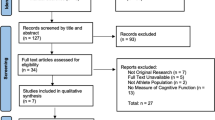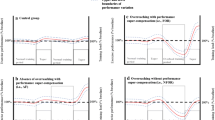Abstract
Fiercer competition between athletes and a wider knowledge of optimal training regimens dramatically influence current training methods. A single training bout per day was previously considered sufficient, whereas today athletes regularly train twice a day or more. Consequently, the number of athletes who are overtraining and have insufficient rest is increasing.
Positive overtraining can be regarded as a natural process when the end result is adaptation and improved performance; the supercompensation principle — which includes the breakdown process (training) followed by the recovery process (rest) — is well known in sports. However, negative overtraining, causing maladaptation and other negative consequences such as staleness, can occur.
Physiological, psychological, biochemical and immunological symptoms must be considered, both independently and together, to fully understand the ’staleness’ syndrome. However, psychological testing may reveal early-warning signs more readily than the various physiological or immunological markers.
The time frame of training and recovery is also important since the consequences of negative overtraining comprise an overtraining-response continuum from short to long term effects. An athlete failing to recover within 72 hours has presumably negatively overtrained and is in an overreached state. For an elite athlete to refrain from training for >72 hours is extremely undesirable, highlighting the importance of a carefully monitored recovery process.
There are many methods used to measure the training process but few with which to match the recovery process against it. One such framework for this is referred to as the total quality recovery (TQR) process. By using a TQR scale, structured around the scale developed for ratings of perceived exertion (RPE), the recovery process can be monitored and matched against the breakdown (training) process (TQR versus RPE). The TQR scale emphasises both the athlete’s perception of recovery and the importance of active measures to improve the recovery process. Furthermore, directing attention to psychophysiological cues serves the same purpose as in RPE, i.e. increasing self-awareness.
This article reviews and conceptualises the whole overtraining process. In doing so, it (i) aims to differentiate between the types of stress affecting an athlete’s performance; (ii) identifies factors influencing an athlete’s ability to adapt to physical training; (iii) structures the recovery process. The TQR method to facilitate monitoring of the recovery process is then suggested and a conceptual model that incorporates all of the important parameters for performance gain (adaptation) and loss (maladaptation).
Similar content being viewed by others
References
Bompa T. Theory and methodology of training: the key to athletic performance. Dubuque (IA): Kendall/Hunt, 1983
Raglin JS. Overtraining and staleness: psychometric monitoring of endurance athletes. In. Singer RB, Murphey B, Tennant LK, editors. Handbook of research on sport psychology. New York (NY): Macmillan, 1993; 840–50
Lehman M, Foster C, Keul J. Overtraining in endurance athletes: a brief review. Med Sci Sports Exerc 1993; 26: 854–61
Kuipers H, Keizer HA. Overtraining in elite athletes: review and directions for the future. Sports Med 1988; 6: 79–92
Budgett R. Overtraining syndrome. Br J Sports Med 1990; 24: 231–6
Morgan WP, Brown DR, Raglin JS, et al. Psychological monitoring of overtraining and staleness. Br J Sports Med 1987; 21: 107–14
Fry RW, Morton AR, Keast D. Overtraining in athletes: an update. Sports Med 1991; 12: 32–65
Hooper SL, Mackinnon LT, Howard A, et al. Markers for monitoring overtraining and recovery. Med Sci Sports Exerc 1995; 27: 106–12
Fry AC, Kraemer WJ. Resistance exercise overtraining and overreaching: neuroendocrine responses. Sports Med 1997; 23: 106–29
Maslach C. Burned-out. Hum Behav 1976; 5: 16–22
Smith RE. Toward a cognitive-affective model of athletic burnout. J Sport Psychol 1986; 8: 36–50
Fry RW, Grove JR, Morton AR, et al. Psychological and immunological correlates of acute overtraining. Br J Sports Med 1994; 28: 241–6
Fry AC, Kraemer WJ, Borselen FV, et al. Performance decrements with high-intensity resistance exercise overtraining. Med Sci Sports Exerc 1994; 26: 1165–73
Marion A. Overtraining and sport performance. Coaches Report 1995; 2: 12–9
Mackinnon LT, Hooper S. Mucosal (secretory) immune system response to exercise of varying intensity and during overtraining. Int J Sports Med 1994; 15: 179–83
Jeukendrup AE, Hesslink MKC, Snyder AC, et al. Physiological changes in male competitive cyclists after two weeks of intensified training. Int J Sports Med 1992; 13: 534–41
Kuipers H. How much is too much? Performance aspects of overtraining. Res Q Exerc Sport 1996; 67 Suppl. 3: 65–9
Morgan WP. Psychological components of effort sense. Med Sci Sports Exerc 1994; 26: 1071–7
Hooper SL, Mackinnon LT. Monitoring overtraining in athletes: recommendations. Sports Med 1995; 20: 321–7
Shephard RJ, Shek PN. Potential impact of physical acitivity and sport on the immune system: a brief review. Br J Sports Med 1994; 28: 347–55
Raglin JS, Eksten F, Garl T. Mood state responses to a preseason conditioning program in male collegiate basketball players. Int J Sport Psychol 1995; 26: 214–25
O’Connor PJ. Overtraining and staleness. In. Morgan WP, editor. Physical activity and mental health. Washington, DC: Taylor & Francis, 1998: 145–60
Hooper SL, Mackinnon LT, Hanrahan S. Mood states as an indication of staleness and recovery. Int J Sport Psychol 1997; 28: 1–12
Berglund B, Säfström H. Psychological monitoring and modulation of training load of world-class canoeists. Med Sci Sports Exerc 1994; 26: 1036–40
O’Connor PJ, Morgan WP, Raglin JS. Psychobiologic effects of 3 days of increased training in female and male swimmers. Med Sci Sports Exerc 1991; 23: 1055–61
Snyder AC, Jeukendrup AE, Hesslink MKC, et al. A physiological/ psychological indicator of over-reaching during intensive training. Int J Sports Med 1993; 14: 29–32
Raglin JS, Morgan WP. Development of a scale for use in monitoring training-induced distress in athletes. Int J Sports Med 1994; 15: 84–8
Morgan WP, Costill DL, Flynn MG, et al. Mood disturbance following increased training in swimmers. Med Sci Sports Exerc 1988; 20: 408–14
Kallus KW. Recovery-stress-questionnaire: manual. Würzburg: University of Würzburg, 1995
Costill DL, Flynn MG, Kriwan JP, et al. Effects of repeated days of intensified training on muscle glycogen and swimming performance. Med Sci Sport Exerc 1988; 20: 249–54
Verde T, Tomas S, Shephard RJ. Potential markers of heavy training in highly trained distance runners. Br J Sports Med 1992; 26: 167–75
Harre D. Principles of sport training. Berlin: Sportverlag, 1982
Viru A. The mechanism of training effects: a hypothesis. Int J Sports Med 1984; 5: 219–27
Borg G. Physical performance and perceived exertion [dissertation]. Lund, Sweden: Gleerup, 1962
Borg G. Perceived exertion as an indicator of somatic stress. Scand J Rehabil Med 1970; 2: 92–8
Martens R, Vealey R, Burton D. Competetive anxiety in sport. Champaign (IL): Human Kinetics, 1990
Harre D. Trainingslehre. Berlin, Germany: Sportverlag, 1973
Israel S. Zür problematic des übertrainings aus internistischer und leistungsphysiologicher sicht. Medizin Sport 1976; 16: 1–12
Kinderman W. Das übertraining-ausdruck einer vegitativen fehlsteuerung. Z Sportmedizin 1986; H8: 138–45
Brooks GA, Fahey TD. Exercise physiology: human bioenergetics and its applications. New York (NY): Macmillan, 1985
Taylor SR, Rogers GG, Driver HS. Effects of training volume on sleep, psychological, and selected physiological profiles of elite female swimmers. Med Sci Sports Exerc 1997; 29: 688–93
Uneståhl L-E. Integrerad mental träning (Integrated mental training) [Swedish]. Malmö, Sweden: Skogsgrafiska AB, 1995
Veale DMW. Psychological aspects of staleness and dependence on exercise. Int J Sports Med 1991; 12: 19–22
Weinberg R, Gould D. Foundations of sport and exercise psychology. Champaign (IL): Human Kinetics, 1995
Evjenth O, Hamberg J. Muscle stretching in manual therapy. Vol. 1 & 2. Örebro, Sweden: Alfta Rehab förlag, 1985
Bruin G, Kuipers H, Keizer HA, et al. Adaptations and overtraining in horses subjected to increased training loads. J Appl Physiol 1994; 76: 1908–13
Kenttä G. Överträningssyndrom: en psykofysiologisk process (Overtraining: a psychophysiological process) [Swedish]. Luleå, Sweden: Högskolan i Luleå, 1996
Noble BJ, Robertson RJ. Perceived exertion. Champaign (IL): Human Kinetics, 1996
Watt B, Grove R. Perceived exertion: antecedents and applications. Sports Med 1993; 15: 225–41
Hassmén P. Perceived exertion: applications in sports and exercise [dissertation]. Edsbruk, Sweden: Akademitryck AB, 1991
Borg G. Perceived exertion: a note on ‘history’ and methods. Med Sci Sports 1973; 5: 90–3
Hendrickson CD, Verde TJ. Inadequate recovery from vigorous exercise: recognizing overtraining. Physician Sportsmed 1994; 22: 56–8, 61-2, 64
Rushall BS. A tool for measuring stress tolerance in elite athletes. Appl Sport Psychol 1990; 2: 51–66
Author information
Authors and Affiliations
Corresponding author
Rights and permissions
About this article
Cite this article
Kenttä, G., Hassmén, P. Overtraining and Recovery. Sports Med 26, 1–16 (1998). https://doi.org/10.2165/00007256-199826010-00001
Published:
Issue Date:
DOI: https://doi.org/10.2165/00007256-199826010-00001




